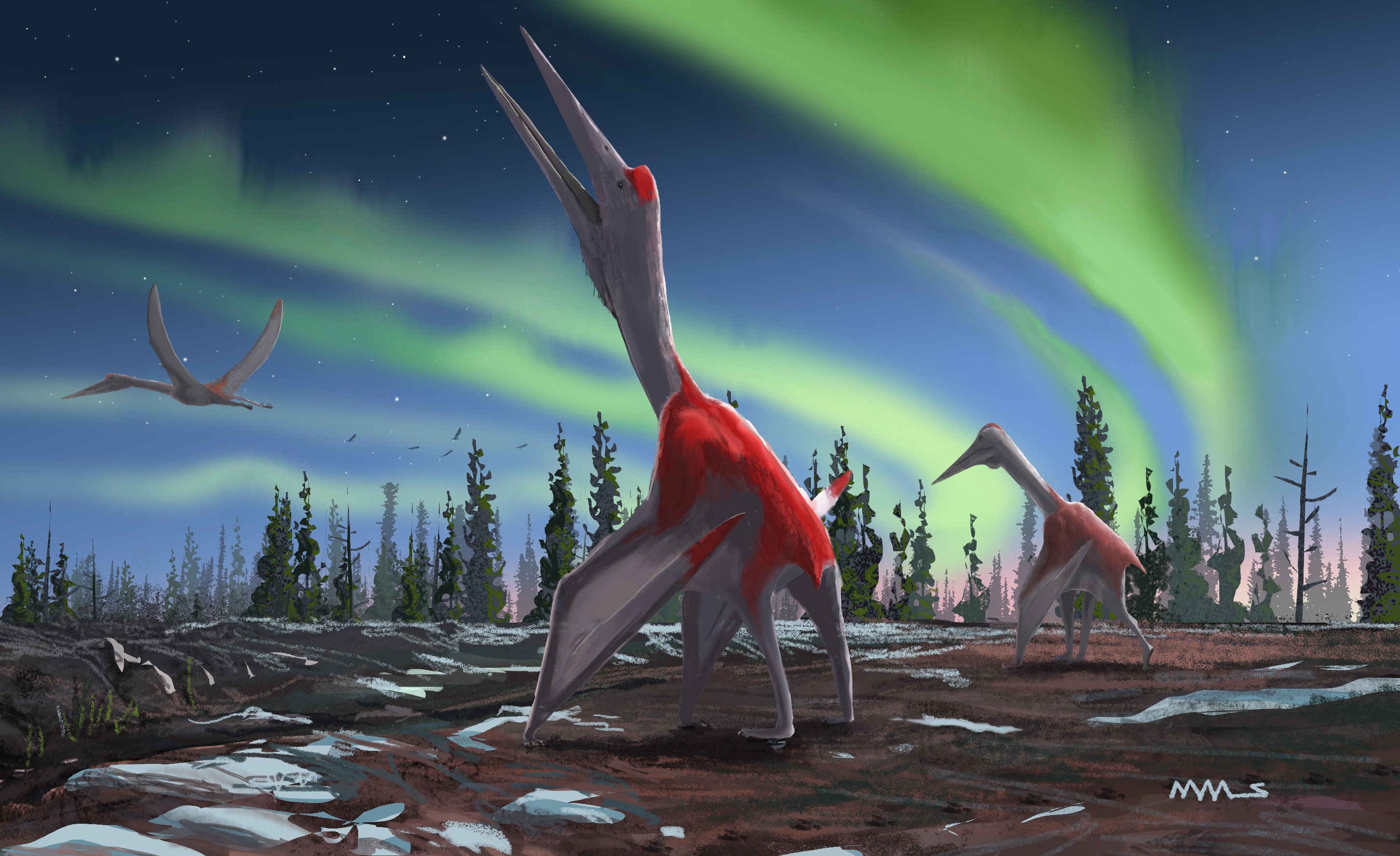
Life reconstruction of Cryodrakon boreas. Artwork by David Maas, used with permission.
A few years ago Mike Habib invited me to collaborate on a paper looking at the anatomy of the exceptionally well preserved humerus of an azhdarchid pterosaur from Dinosaur Provincial Park in Alberta. This specimen is well known as it is a partial skeleton and includes a tibia with bite marks and even a shed tooth from a small theropod. It, and a number of other pterosaur bits from the park were described in the famous Dinosaur Park book from the early 2000s and were tentatively refereed to Quetzalcoatlus. Intending to use both this and soem Quetz material for his study, Mike asked me to look at the material and add something on the taxonomy to make sure this really was the same thing and if not, see if we could say anything meaningful about it’s identity. I got about 6000 words into a draft before I realised that this was in now way a subsection of a paper on mechanics and anatomy and this was going to have to be it’s own entity. Fast forward a couple of years and here is the newly named and distinct Cryodrakon boreas.

Mid cervical vertebra of Cryodrakon boreas, nicknamed the teddybear for obvious reasons.
The name means the ‘frozen dragon of the north wind’ is clearly an azhdarchid pterosaur. We’ve recently found that not all of these animals had super long necks and some were rather short and robust-necked animals. Cryodrakon is certainly one of the longer-necked ones, but it’s vertebrae do seem to be shorter and wider than comparable Quetz vertebrae suggesting that it had a more robust neck than it’s more famous cousin. It’s humerus is also a little less robust than the Texan so presumably it’s ecology was a little different too given how important this element is for walking, take-off and flight.
There’s a fair bit of material known too. The holotype has a humerus, midcervical, pteroid, tibia, rib and wing metacrapl all well preserved (amazing for an azhdarchid) and represent a juvenile of about 5 m wingspan. There’s a lot of bits including lots of isolated cervicals of animals of various sizes right down to things of perhaps 1.5 m wingspan and one huge and fragmentary vertebra that we estimate would represent an anuld in the 10 m wingspan realm. So at adult this would be an aniaml approaching or comparable to the other biggest azhdarchids known. The fact we have so much material is a real bonus as we’re able to show that essentailly all the vertebrae have a unifying set of features so we can infer that even young animals have the same features as adults and we can unify them as a single species. There could be more here of course (it’s hard to say too much about things like an isolated partial scapulocoracoid of soem of the very crushed vertebae) but for now the best interepretation is that there’s one species represented by lots of specimens.

Life reconstruction of Cryodrakon boreas. Artwrok by David Maas, used with permission.
My thanks also to David Maas for his beautiful artwork which he did at short notice to help show off the animal (he retains the copyright, these are used with permission). The colours are supposed to be a bit of fun and obviously echo the Canadian flag but are also not implausible given how little we know about pterosaur colours and the bright patterns we have for at least some very large modern birds. Equally the environment it primarily lived in was subtropical but it’s also likely it would have seen snow on occasion and certainly would have seen the northern lights, but the name primarily refers to the Albertan winter.

Another fantastic Pterosaur! 🙂